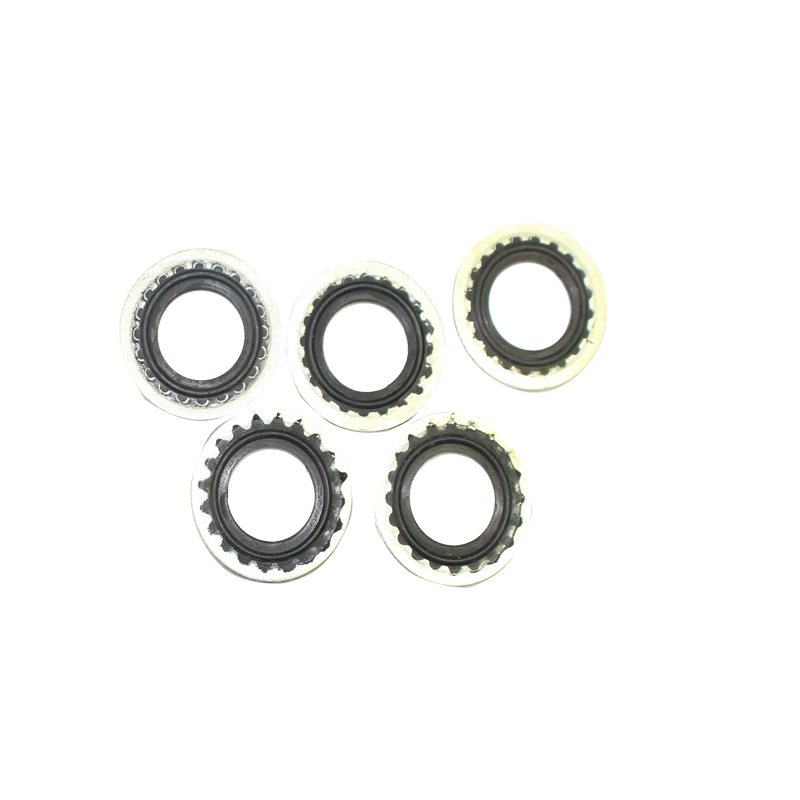shaft lip seals
Understanding Shaft Lip Seals Importance and Applications
Shaft lip seals are crucial components used in various mechanical systems to prevent the leakage of fluids, such as oils and lubricants, between the moving shaft and its housing. They play a vital role in maintaining the efficiency and longevity of machinery by reducing friction and minimizing contamination. In this article, we will explore the design, functionality, materials, and applications of shaft lip seals.
Design and Functionality
A shaft lip seal typically consists of a flexible lip that contacts the rotating shaft to form a tight seal. The seal is mounted in a housing, allowing it to withstand operating conditions such as temperature variations, pressure fluctuations, and exposure to contaminants. The primary function of the lip seal is to retain lubricants while preventing external contaminants like dirt, dust, and moisture from entering the system.
The lip of the seal is designed to deform slightly as it contacts the shaft, creating a dynamic sealing effect. This design ensures that even with minor imperfections on the shaft surface or misalignment, the seal can still maintain an effective barrier. Additionally, shaft lip seals can have various configurations, including single-lip, double-lip, or even specialized designs for specific applications, enhancing their versatility.
Material Considerations
The effectiveness of a shaft lip seal largely depends on the materials used in its construction. Common materials for lip seals include rubber compounds like Nitrile (Buna-N), Viton (FKM), and Silicone, which offer varying degrees of resistance to temperature, chemicals, and wear. The choice of material is critical, as it can influence the seal's performance and lifespan.
For instance, Nitrile rubber is highly effective for oil and fat applications, making it suitable for automotive and industrial machinery. In contrast, Viton is preferable in high-temperature environments and applications involving aggressive chemicals. Understanding the operating environment allows engineers to select the most appropriate material, ensuring minimal wear and maximum sealing performance.
Applications of Shaft Lip Seals
shaft lip seals

Shaft lip seals are employed across various industries, showcasing their versatility and essential role in machinery
. Common applications include1. Automotive Industry In vehicles, shaft lip seals are used in engine components, transmission systems, and wheel bearings to prevent lubricant leakage and protect against environmental contaminants.
2. Industrial Equipment Many industrial machines and equipment, such as pumps, compressors, and motors, rely on shaft lip seals to maintain lubrication and ensure smooth operation. Their ability to handle high speeds and loads makes them ideal for such applications.
3. Aerospace In the aerospace industry, shaft lip seals must meet stringent safety and reliability standards, protecting critical components in engines and landing gear systems from contamination.
4. Marine Applications Shaft lip seals in marine applications are crucial for preventing water ingress in propulsion systems and ensuring the longevity of equipment subjected to harsh marine environments.
5. Agricultural Machinery Equipment such as tractors and harvesters often employs shaft lip seals to prevent fluid leakage, reducing maintenance needs and enhancing operational efficiency.
Conclusion
In conclusion, shaft lip seals are an indispensable component of many mechanical systems, contributing significantly to the reliability and efficiency of machinery. Their ability to effectively seal against fluid leakage while preventing contaminants from entering the system is paramount across various industries. By understanding the design, materials, and applications of these seals, engineers and manufacturers can better appreciate their role in optimizing machinery performance and ensuring operational longevity. As technology advances, the development of more durable and efficient shaft lip seals will continue to play a critical role in the future of mechanical engineering.
-
Simplifying Oil Changes: A Comprehensive Guide to Oil Drain Plugs and Their Variants
News Aug.04,2025
-
Mastering Oil Drain Maintenance: Solutions for Stripped, Worn, and Upgraded Oil Plugs
News Aug.04,2025
-
Fixing Oil Pan Plug Issues: Leaks, Stripped Nuts, and the Right Replacement Solutions
News Aug.04,2025
-
Everything You Need to Know About Oil Drain Plugs: Sizes, Fixes, and Upgrades
News Aug.04,2025
-
Choosing the Right Oil Drain Plug: A Guide to Sizes, Materials, and Drain Innovations
News Aug.04,2025
-
A Complete Guide to Automotive Drain Plugs: Types, Problems, and Innovative Solutions
News Aug.04,2025
-
The Ultimate Guide to Car Repair Kits: Tools and Essentials Every Driver Should Own
News Aug.01,2025
Products categories















